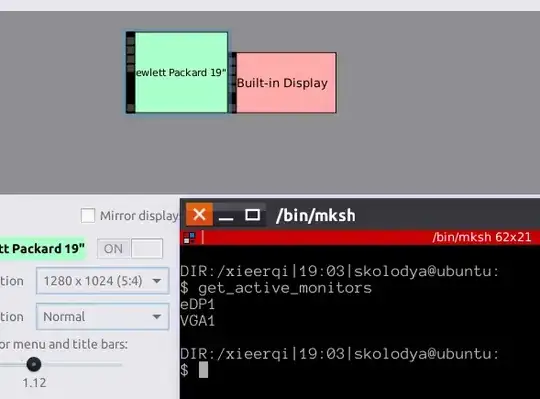The displays that are active have their resolution and offset number shown in the identifying line of xrandr output. Here's what I mean:
$ xrandr | grep connected
eDP1 connected primary 1366x768+1280+256 (normal left inverted right x axis y axis) 345mm x 194mm
DP1 disconnected (normal left inverted right x axis y axis)
HDMI1 disconnected (normal left inverted right x axis y axis)
VGA1 connected 1280x1024+0+0 (normal left inverted right x axis y axis) 340mm x 270mm
VIRTUAL1 disconnected (normal left inverted right x axis y axis)
In the output you can see that my laptop's built-in monitor and VGA1 both are connected, and have resolution ( in case of built-in display eDP1 it is 1366x768 ). Thus the task simply becomes text-processing of the output. For that purpose , I've written a small function that you can use in your scripts or ~/.bashrc:
get_active_monitors()
{
xrandr | awk '/\ connected/ && /[[:digit:]]x[[:digit:]].*+/{print $1}'
}
Here's test runs:
With VGA monitor on

With VGA monitor off


